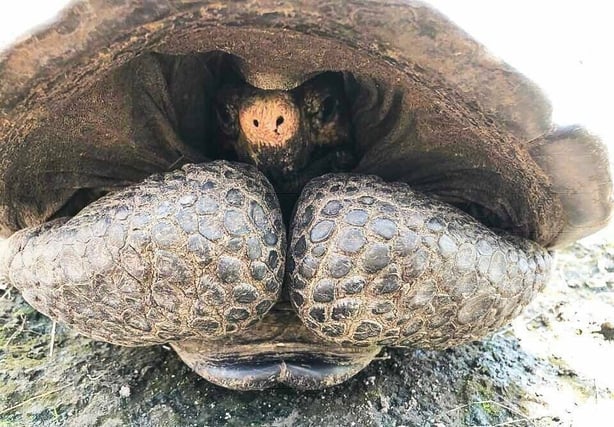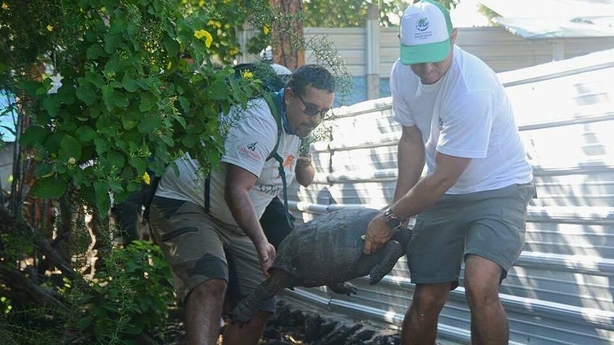A tortoise whose species was believed extinct for a century has been found in one of the islands of the Galapagos archipelago.
The Chelonoidis Phantasticus tortoise was discovered by Ecuadorian park guards and a US conservation organisation.
The female, who is over 100 hundred years old, was found on Sunday in a vegetation zone on Fernandina Island, according to a statement from the Ministry of the Environment of Ecuador.
"For the Galapagos, it really is perhaps the most important find in the last century," said Washington Tapia, a scientist at Galapagos Conservancy.

Researchers believe there could be more tortoises of this species because they found tracks and excrement in other areas of Fernandina Island, in the west of the archipelago.
"We have to assemble a new expedition to return to the site and inspect if there is another individual of the same species," said Danny Rueda Cordova, Ecosystems Director at the Galapagos National Park.
If they locate male tortoises, Rueda Cordova added, they will begin the process of breeding the species in captivity.
The discovery was made by a joint expedition between the Directorate of the Galapagos National Park and the US organisation Galapagos Conservancy.

The team moved the tortoise in a boat to the Giant tortoise Breeding Center on Santa Cruz Island where it will stay in a specially implemented pen for their stay.
Fernandina is the third largest island of Galapagos and has an area of 638 square kilometers.
Galapagos has 13 main islands and at least 17 islets in the middle of the Pacific Ocean, 1,000km from the Ecuadorian mainland.
The archipelago of volcanic origin hosts unique and endemic species, especially giant tortoises, marine iguanas, penguins, cormorants and sea lions.
Galapagos was declared a National Heritage Site in 1979 in recognition of its unique species, animals and plants, terrestrial and marine that served as the basis for the English scientist Charles Darwin to develop his theory of the evolution of species.

